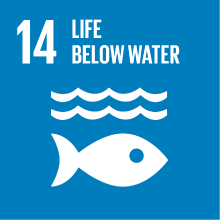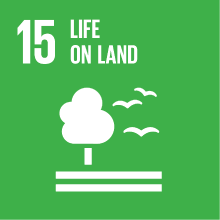GERMAN LANGUAGE 2
- Academic year
- 2019/2020 Syllabus of previous years
- Official course title
- LINGUA TEDESCA 2
- Course code
- LT0062 (AF:322336 AR:173038)
- Modality
- On campus classes
- ECTS credits
- 12
- Subdivision
- Class 1
- Degree level
- Bachelor's Degree Programme
- Educational sector code
- L-LIN/14
- Period
- 2nd Semester
- Course year
- 2
- Moodle
- Go to Moodle page
Contribution of the course to the overall degree programme goals
Expected learning outcomes
2) Applying knowledge and understanding:
meta-linguistic reflection, also in contrast with Italian, about complex syntactic and textual structures of German. Ability to use the appropriate terminology in the analysis of texts that display those features. Ability to understand an academic lecture on a linguistic argument. Ability to read and understand a short literary text. In general, the ability to produce (level B2) and understand (level B2+) written and oral texts in German.
3) Making judgements: Ability to express a personal and original position on current affairs, also taking into account intercultural aspects. Ability to independently resolve problems of understanding and interpretation of German texts. Ability to make judgements on translational solutions.
4) Communication skills: receptive skills at level B2+, e.g. ability to follow academic lectures, news programs and many movies. Ability to understand current affairs articles that express a point of view and to read a long narrative text. Productive skills at level B2, e.g. ability to express and argue a point of view on a social/(inter)cultural subject, both orally and in writing. Interactive skills at level B2, e.g. ability to interact with a degree of fluency and spontaneity that makes possible regular interaction with native speakers. Ability to take actively part in the interaction in the classroom, in the virtual classroom and in the language classes.
5) Learning skills: Ability to take notes during a university lecture. Ability to properly use the bilingual and monolingual dictionary. Ability to use language resources on the Internet. Ability to use the tools of the virtual classroom (Moodle).
Pre-requirements
Contents
Dr. Cognola’s module (30 hours, 2 semester) aims at introducing the most complex (from a contrastive German-Italian perspective) syntactic constructions of German, especially of its written varieties. Through the analysis and the translation of i) extracts of real language taken from several text types (for instance lyrics, newspaper articles, teaching books for university students) and ii) parts of the short German novel “Ich und Kaminski”, the course aims at consolidating and widen the students’ knowledge of the German language, especially at the lexical, morphological and syntactic levels.
After briefly dealing with the most important text types of the German written language, with a specific focus on the Leserbrief, Dr. Cognola’s module will discuss the following phenomena:
- syntax, function and translation of German expletives (da, es, hier);
- syntax and translation of the German nominal phrase;
- syntax, function and translation of German non-finite clauses (zu-Infinitiv, zu Partizip) in attributive function;
- structure of the German Mittelfeld;
- infinitival constructions and restructuring phenomena;
- realization of (epistemic and deontic) modality in German: modal verbs, modal particles, evaluative adverbs (Satzadverbien);
- passive constructions (weden-Passiv; Zustandspassiv; bekommen-Passiv / Rezipienten-Passiv) and their functions and translations in different text types;
- syntax, functions and translations of Pro-Formen (pronouns and Pro-Adverbien);
- syntax, functions and translations of German connective adverbs (Konnektoren).
Beside the theoretical work, the module will also try to improve the students’ translation skills. The translation skills will be enhanced through the following activities:
a) translation of German texts discussed during the lessons;
b) translation in class of some extracts of the short novel Ich und Kaminski.
For each class students will be asked to read at home 10 pages of the short novel Ich und Kaminski. (168 pages), which will be commented and whose most difficult part will be translated in class.
Referral texts
MITTELPUNKT NEU B2 LEHRBUCH: Deutsch als Fremdsprache für Fortgeschrittene, Stuttgart: Klett 2012, ISBN 978-3-12-676652-4
MITTELPUNKT NEU B2 ARBEITSBUCH mit Audio-CD, Stuttgart: Klett 2012, ISBN 978-3-12-676653-1
*** Mandatory texts for Dr Cognola's module:
Slides and materials on the course page on Moodle/E-Learning.
Daniel Kehlmann, Ich und Kaminski. Suhrkamp Taschenbuch. 2004
***Reference (Not obligatory) texts:
Paschke, Peter: Dispensa del corso di Lingua 2 a.a. 2018-2019
DUDEN Die Grammatik. 9. Auflage
*** Suggested reference grammars (with exercises):
Hilke Dreyer, Richard Schmitt, LEHR- UND ÜBUNGSBUCH DER DEUTSCHEN GRAMMATIK – AKTUELL NEUBEARBEITUNG, Ismaning: Hueber 2012, 392 pagg. (ISBN 978-3-19-307255-9 ) oppure nella versione italiana: Hilke Dreyer, Richard Schmitt, GRAMMATICA TEDESCA CON ESERCIZI – NUOVA EDIZIONE, Ismaning: Hueber 2013, 360 pagg. (ISBN 978-3-19-047255-0).
Gerhard Helbig, Joachim Buscha, DEUTSCHE GRAMMATIK. EIN HANDBUCH FÜR DEN AUSLÄNDERUNTERRICHT, Berlin [etc.]: Langenscheidt 2001 (or later edition).
*** Suggested German-German dictionaries:
WAHRIG DEUTSCHES WÖRTERBUCH, Gütersloh: Bertelsmann 2011, 1728 pagg. (ISBN 978-3577075954) [anche: ed. Zanichelli 2007, ISBN 9788808166760] o altra edizione (disponibile anche con CD-ROM), oppure:
DUDEN UNIVERSALWÖRTERBUCH, Mannheim: Bibliographisches Institut 2011 (7a ed.), 2112 pagg., (ISBN 978-3411055074) oppure con CD-ROM (ISBN 978-3411714247) o altra edizione (disponibile anche con CD-ROM).
*** Suggested German-Italian dictionaries:
IL NUOVO DIZIONARIO DI TEDESCO. DIZIONARIO TEDESCO-ITALIANO, ITALIANO-TEDESCO, di L. Giacoma e S. Kolb, Bologna: Zanichelli 2009, 2672 pagg., (ISBN 978-8808177681) o altra edizione (disponibile anche con CD-ROM) oppure:
Assessment methods
Part a) meta-linguistic skills and their application:
Test 1: test on Dr Cognola's module (with monolingual dictionary), 60 min.
The test of Dr Cognola’s module will be in written form and will follow the following structure:
a) translation in Italian of a short German text taken from the short novel “Ich und Kaminski” or from one of the texts discussed in class;
b) theoretical question about one of the syntactic phenomena present in the text;
c) exercise on the syntactic phenomenon dealt with in the previous exercise and in the text.
The following evaluation criteria play a role in determining the final grade:
a) correctness of the translation, in the answers and in theexercises according to the main subjects of the syllabus; b) completeness of the answers and in the exercises according to the main subjects of the syllabus; c) ability to present and discuss the main subjects of the syllabus in a clear and logical manner; d) ability to properly use the scientific language of linguistics.
The Linguistic exam is passed with a grade of 18/30.
The highest score (30/30 e lode) can be get by excellent exams in which students demonstrate to have acquired excellent knowledge of all the course's topics, to be able to present and discuss them in a clear and logical manner (also from a constrastive Italian-German perspective), with the correct use of the scientific language of linguistics.
Test 2: grammar test (gap filling and transforming exercises), 60 min.
Part b) written skills (receptive and productive):
Test 3: Reading comprehension (Leseverstehen) of a journalistic text with open questions,
Test 4: Written expression (Leserbrief), both with monolingual dictionary, 120 min. for both tests.
If the students passes both tests of a written part in the same examination period, the results remain valid for the other examination periods of the same academic year.
Part c) Oral and interactive skills:
Test 5: To the oral examination, which takes place ca. 1 week after the written one, are admitted the candidates who have passed both the written parts. It tests the ability to present and discuss current topics (already introduced during the language exercises) starting from some photos (10 min., without preparation). In case of fail, the results of the written tests will remain valid for the remaining examination periods of the academic year.
Until all parts are passed, the student must re-enroll for the examination in order to be admitted to the missing part/parts.
If the student does not pass all parts within the last examination period (January), the results achieved so far will be cancelled.
The final grade is calculated as follows:
Test 1: 40%
Test 2: 15%
Test 3: 15%
Test 4: 15%
Test 3: 15%
Type of exam
Teaching methods
Further information
The division of language exercise groups will be visible in the timetable published online.
The teaching and the exam preparation materials will be published in the virtual classroom (Moodle).
2030 Agenda for Sustainable Development Goals
This subject deals with topics related to the macro-area "Natural capital and environmental quality" and contributes to the achievement of one or more goals of U. N. Agenda for Sustainable Development



